115 DVD-A / Ludwig van Beethoven: Septet op. 20, Octet op. 103
Description
"Freden (Leine) might only be a small dot on the map but the Internationale Fredener Musiktage have become an essential part of the German music festival landscape. Over the years the scenic Leine valley has turned into a sort of summer residence, where every individual artists's musical whims can draw on new strength and ispiration far from the metropolitan hustle and bustle. So it is not surprising that more and more top national and international musician play in the camerata freden and join again each year to produce an exquisite festival ensemble."
5 reviews for 115 DVD-A / Ludwig van Beethoven: Septet op. 20, Octet op. 103
You must be logged in to post a review.

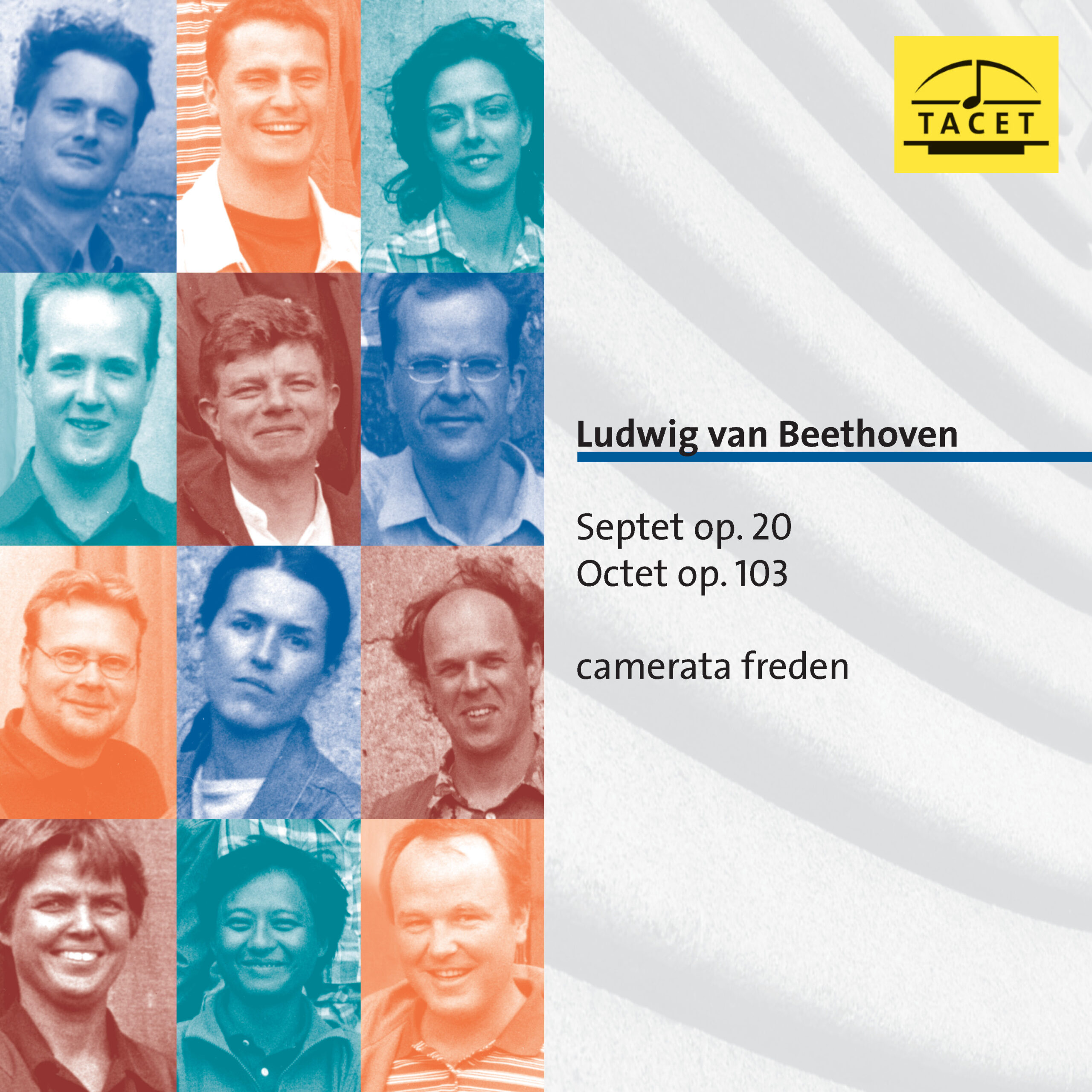
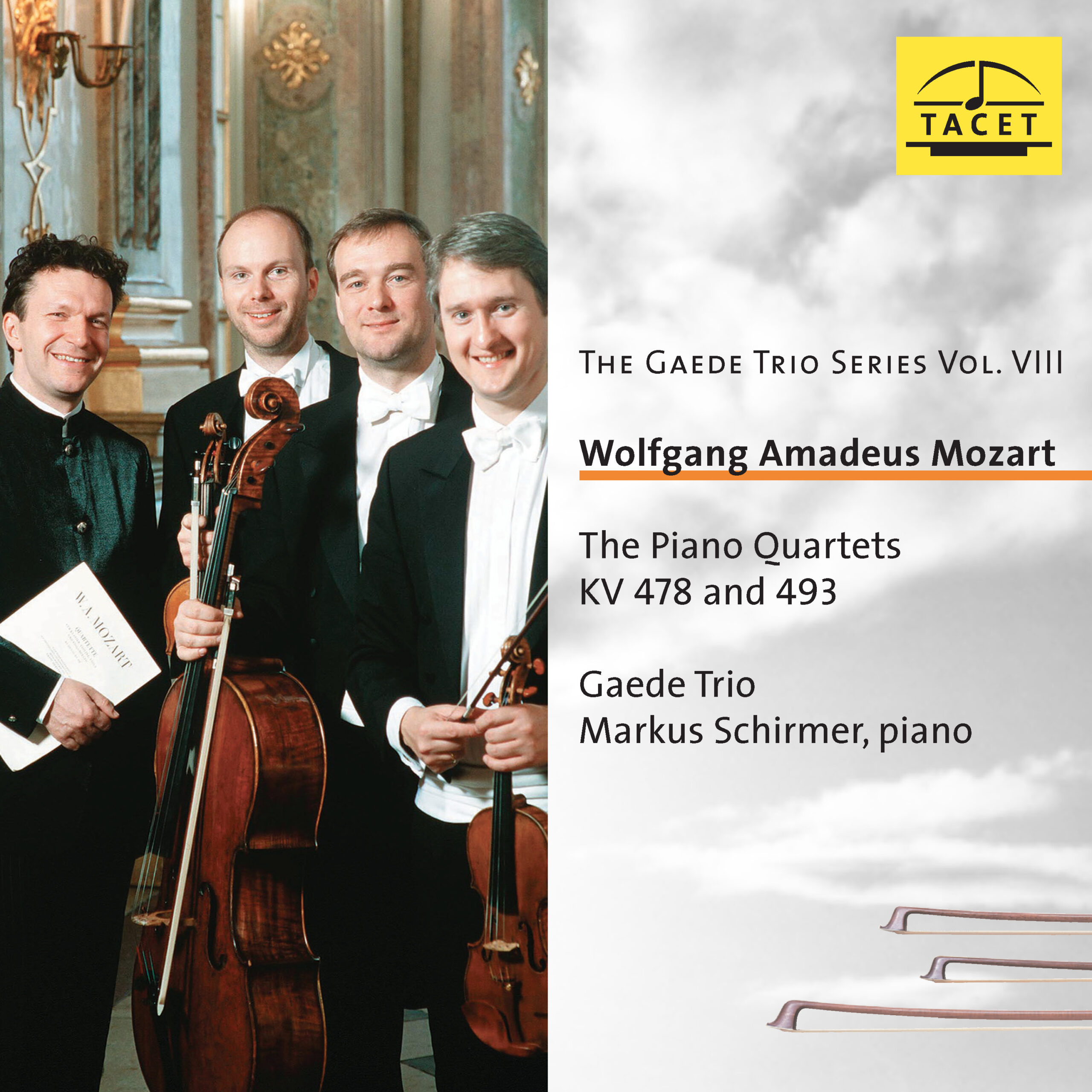
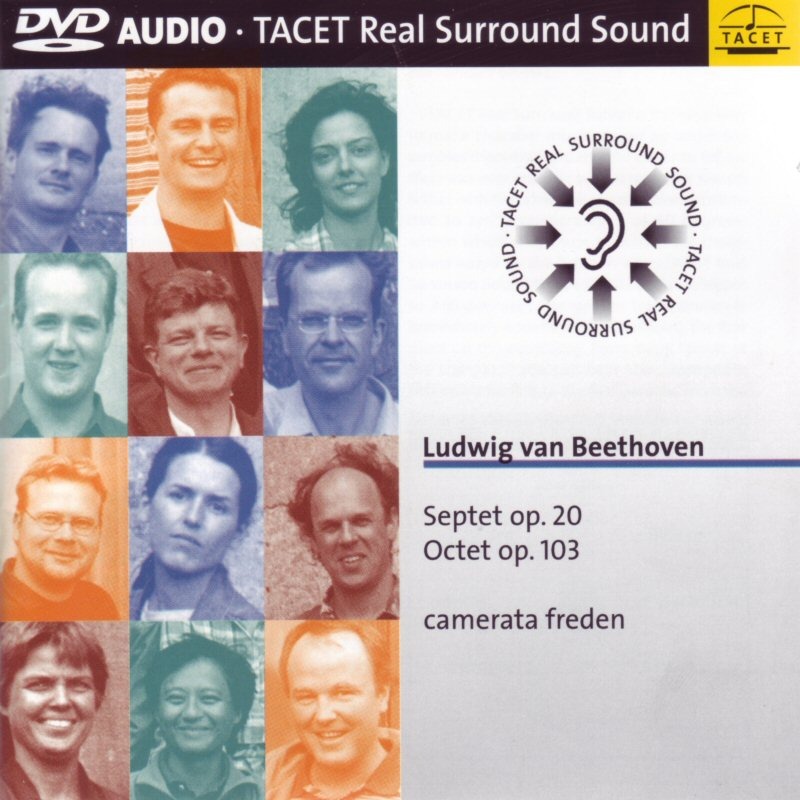
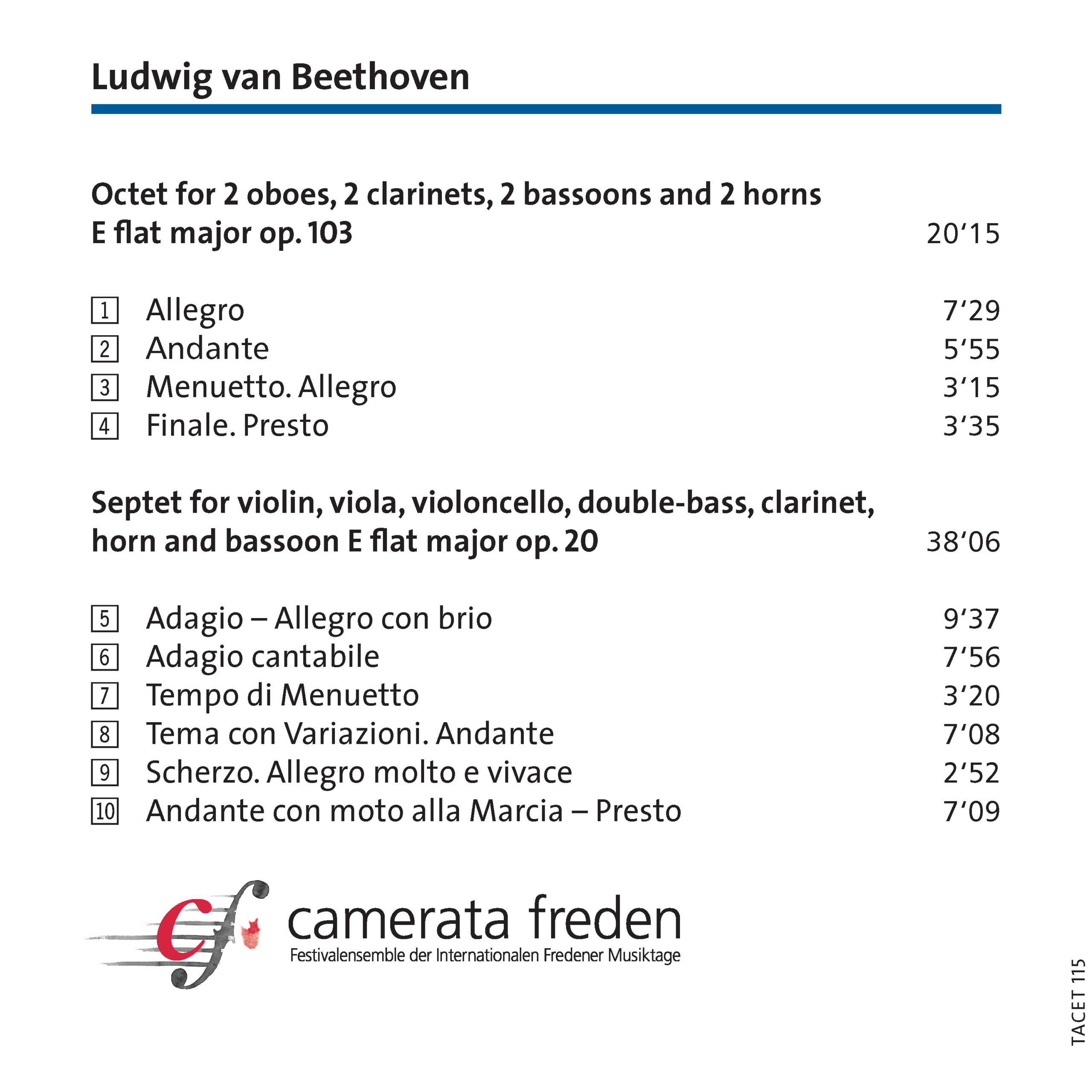
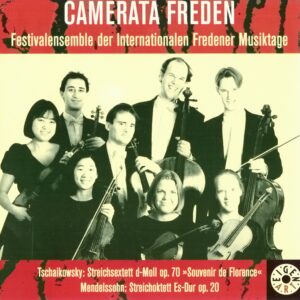
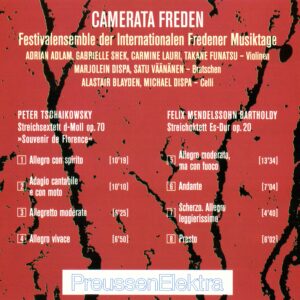
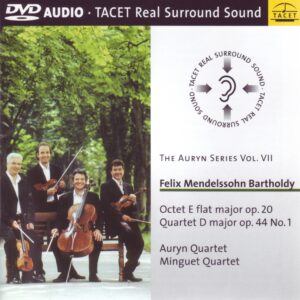
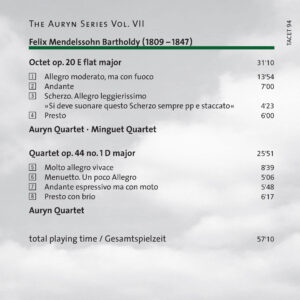
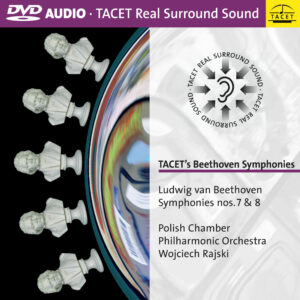
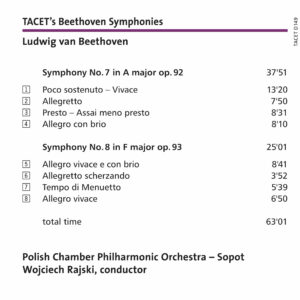
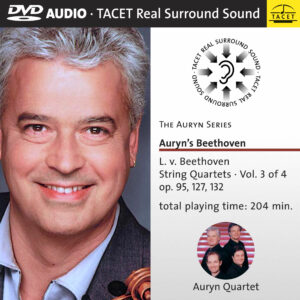
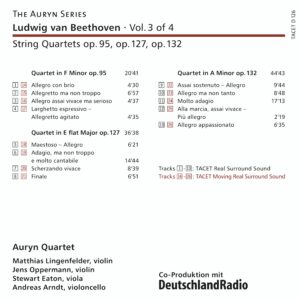
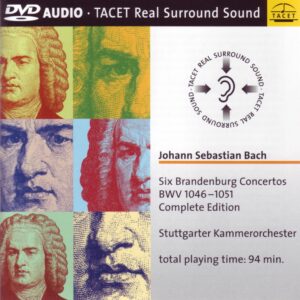
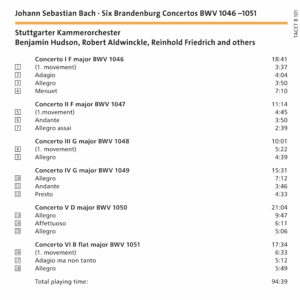
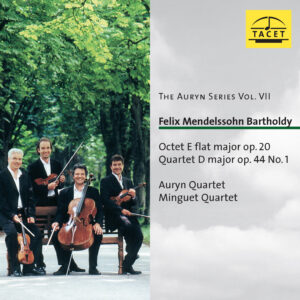
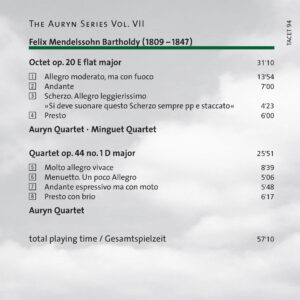
Jean-Marc’s Multi-Channel Recordings Reviews –
Best recording I have ever heard....
The best recording I have ever heard is from a small German audiophile label called TACET. It is a DVD-audio featuring the Camerata Freden chamber Orchestra playing Beethoven Octet for winds op 103, and the Septet op. 20. (TACET DVD D115) What is so special about this recording is the multi-channel technique. Each speaker seems dedicated to one or a group of instrument. Far from being a gimmick this makes the recording sounds like you are IN the ensemble and each instrument sounds exactly as it should. This is a far-cry from many multi-channel recordings which are mainly stereo, with a little bit of echo in the surround speakers.
Another advantage of this technique is that each instrument sounds "acoustically" correct. For example the oboe has a rich and dense sound. The clarinet has its characteristic "projection" that is so hard to record. And of course the horns sounds huge. Strings have similar characteristics where the viola is very easy to distinguish from violins due to a larger soundstage (without being louder). You can feel the cellist sitting on his chair playing is beautiful instrument.
Finally the sense of separation of instrument means that all time each instrument is clearly audible. So for example although the horns may be playing loud at the end of the 4th movement of the octet, and producing a huge nice sound coming from the rear speakers, the oboe (left front) and clarinet (right front) clearly are still perfectly audible as would be the case in a concert hall.
Although the musicians of the Camerata Freden are not of the caliber of the Berlin Philarmonic, their ensemble quality compensate some small weaknesses. The octet is full of youthful vigor (this was an early piece for Beethoven), the Septet is the obvious star of this recording. Each movement tempo is perfect and the ensemble cohesiveness is breath-taking.
This recording is hard to find, but it is worth a little bit of searching. TACET should publish a recording of the Schubert Octet by the same ensemble in early 2005, I can′t wait...
Jean-Marc Serre
Pizzicato –
We thoroughly enjoyed the stereo CD versions of these delightful works by Ludwig van Beethoven. The Camerata Freden performs them with relaxed warmth and heartfelt charm. The ensemble sounds homogeneous, tonally beautiful, and brimming with palpable joy in playing. Now, in the surround sound version, the sonic finesse of these recordings—made with great love and occasional humor—comes across even more vividly, thanks to Tacet’s engineers, who produced this in true Real Surround. That means the listener is placed right in the middle of the music—in a way that wouldn’t actually be possible in reality. And that’s precisely what makes this production such an unforgettable experience. Because one thing is certain: You’ve never heard Beethoven like this before!
RéF
Audiophile Audition –
Another super-involving multichannel release from Tacet, who believe in involving the listener to the max by placing the musicians entirely around you rather than just trying to emulate the proscenium-oriented staging of most other multichannel classical discs. These two works are early Beethoven, following the general style of the serenades of Mozart and others, but with a more substantial feeling about them.
There are diagrams for the placement of the musicians and they are different for the two works since one involves one more player than the other. Of course there are almost twice as many players as channels, so the 2nd oboe and 2nd bassoon are placed to the direct left and right of the listener - in the phantom side channels, so to speak. And the 2nd French horn is placed at the center rear (without using one of the 6.1 formats). For the Septet the violin is given a larger spatial area at left because of its importance musically in the work, the clarinet is at right and the double-bass at center rear this time.
Great chamber music involvement to be sure!
John Sunier
Echo zum Sonntag –
Hörgenuß wie mitten im Orchester
This DVD undoubtedly opens up new horizons for listeners. What is strange, however, is that most producers of classical recordings have yet to fully grasp the potential of this new system. After all, there is indeed a "surround sound" for classical music that, if the listener has the necessary equipment, can transport them into a concert hall or opera house.
Andreas Spreer has been demonstrating this for some time now in the DVD-Audio series of his label, Tacet. His Real Surround Sound is based on the fact that while a music lover may not have eyes in the back of their head, they certainly can hear what’s behind them.
This forms the foundation for a new aesthetic in audio recording, which has already been successfully tested on several larger chamber music works, such as Beethoven’s Wind Octet, Op. 103, and Septet, Op. 20. Skilled sound engineering combined with a consistent recording technique assigns the listener a position they would rarely, if ever, experience in so-called reality.
The result, however, is more than just a new way of hearing the music. The fact that you can feel the second horn at your back in Beethoven’s Wind Octet, or that the prominent role of the violin in the Septet, Op. 20, is given a spatial segment twice as wide as that of the viola, cello, double bass, and the wind trio of clarinet, horn, and bassoon.
These are just some of the possibilities that arise from the interplay of music and clever spatial design.
Stereo –
TACET presents Beethoven's chamber music with unprecedented clarity: By positioning the seven or eight instruments around the listener, a completely new form of interaction emerges, particularly highlighting the "diagonal" relationships between the voices—with perfect balance and a rich, warm sound.
Philipp Kelm